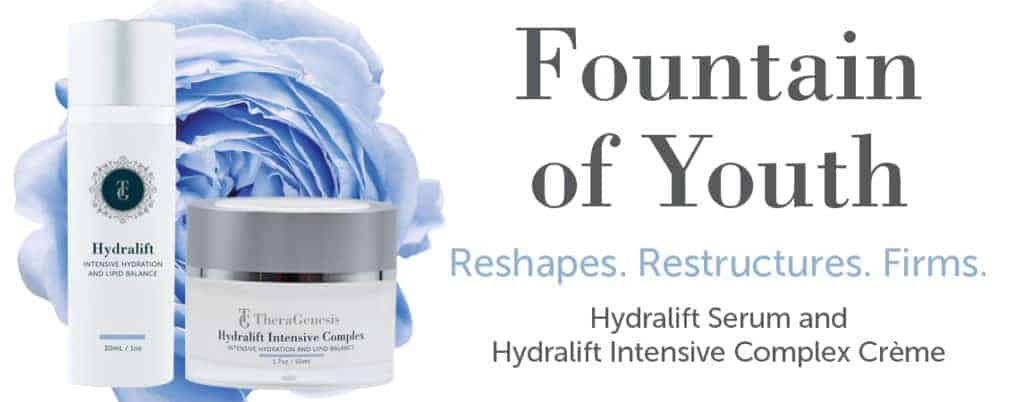Hormones and Menopause
MENOPAUSE IS A NATURALLY occurring stage in every woman’s life, yet experiences are as unique as our thumbprints. Some women scarcely register any physical change in their bodies, while others are bombarded with inexplicable symptoms.
By Trish Green

MENOPAUSE IS A NATURALLY occurring stage in every woman’s life, yet experiences are as unique as our thumbprints. Some women scarcely register any physical change in their bodies, while others are bombarded with inexplicable symptoms. Women between the ages of 45 and 60 are one of the fastest growing segments of the North American population. With more than 50 million women in this age group, this demographic is driving a multibillion dollar wellness economy.
During menopause
Perimenopause or pre-menopause is the time leading up to actual physiological menopause. This phase can last anywhere from 5 to 13 years and is the time when women experience the most symptoms. Menopause itself is actually only a one-day event, the last day of a woman’s period. The average age of menopause is 51; a woman is officially post-menopausal 1 year after the last menstrual cycle.
The menopausal woman
Today’s menopausal woman appears to be dramatically different from her sister of several decades ago. Those of us entering menopause today are described as the “sandwich generation,” and are likely to have older children living at home as well as the additional responsibility of caring for aging parents. Good stress management is therefore critical.
Nutrition
In addition to stress management, nutrition plays a vital role in maintaining optimal health and vitality. Instruct the menopausal client to avoid foods high in fats, salt and caffeine, along with processed foods and food additives. Avoiding alcohol and drugs is recommended, as the enzymes within the adrenal glands that produce adrenal hormones are sensitive to these.
The physiological changes taking place in your body also require specific nutrients to facilitate a comfortable transition. Vitamin, mineral and herbal supplements are highly recommended. As we know, vitamins and minerals are required by the body for the production of hormones. Specifically, a good quality multi-B vitamin complex, pantothenic acid, zinc and vitamins A and E best serve your adrenal glands. Avoid hormonal disruptors such as coffee, alcohol, sugar, carbohydrates, and saturated and chemically altered fats.

The Healthy Woman’s Diet
- High levels of plant foods and fibre
- Raw and lightly cooked vegetables
- Moderate animal protein
- Minimal saturated and processed fats
- Little or no dairy
- Minimal or no wheat
- Foods low in refined sugar and carbohydrates
- Avoid eating late and consume thyroid-friendly foods
- Follow and 80/20 acid/alkaline diet
Exercise
An adequate exercise program is equally important to support body and mind during menopause. Physical activity produces endorphins, which naturally increase the feeling of wellbeing. Adequate sleep is also critical to the functioning of the adrenal glands and ovaries, as they are dependent on the release of hormones that occur while you sleep.
Phytoestrogens
There is growing evidence that eating foods rich in phytoestrogens (plant substances that have estrogen-like activity) significantly help ease the symptoms of menopause, particularly where low estrogen levels are evident. Soybeans are high in phytoestrogens. Japanese women traditionally have a diet high in such foods and report experiencing milder, if any, difficult menopause symptoms. A recent research study of 28 postmenopausal women, each having a minimum of 14 hot flashes a week, illustrated that soy reduced hot flashes by as much as 40 percent. These same women reported an overall improvement in menopausal symptoms. There is one exception where the use of soy is contraindicated and that is in its relationship with the thyroid gland. Many women entering menopause report an increase in weight, especially around the waistline, and difficulty in losing it. This weight gain is due to a slowing down of the thyroid gland, which controls our metabolic rate. Soy products are also strongly contraindicated or hypothyroid conditions.

Phytoestrogen-Rich Foods
These foods contain nutrients that should be beneficial to the menopausal woman’s diet:
- Fruits and vegetables: apples, broccoli, Brussels sprouts, cabbage, carrots, cauliflower, cherries, eggplant, garlic, olives, onions, potatoes, yams, tomatoes
- Herbs and seasonings: aniseed, coconut, fennel, flaxseed, liquorice, oregano, parsley, red raspberry, sage, oregano, thyme, turmeric, hops, verbena
- Beans, grains and seeds: barley, brown rice, bulgur, garbanzo beans, oats, peanuts, peas, soy products, rye, what germ
Testosterone
As estheticians, we are all familiar with evidence of excess levels of testosterone. We deal with clients who experience breakouts on the skin, have excess facial hair, and are agitated and irritable, which are all possible indications of excess testosterone. In a normal ratio, this hormone is required for the correct functioning of the brain, heart and bones. With the help of estrogen, it helps rebuild tissue. Testosterone also helps maintain the tone and strength of muscle tissue. However, as levels of testosterone naturally drop, other physical and emotional symptoms arise. A common complaint from menopausal women is loss of strength and muscle tone in the upper body. Women are encouraged to take up weight training to compensate for this. Low testosterone levels increase dryness in the skin. Increased wrinkling can occur so skin care requirements will change as well. On a general health level, low testosterone can also contribute to increased depression as this hormone is connected to motivation, drive and confidence. Note: testosterone replacement is not recommended as it produces unwanted androgenic responses, such as excess hair growth.
Essential Oils

- Skin care: Jasmine, sandalwood, geranium, rose
- Night sweats: Clary sage, geranium
- Insomnia: Lavender, chamomile, valerian
- Anxiety: Lavender, neroli, chamomile, basil
- Depression: Jasmine, rose, grapefruit, lemon, lime
- Fatigue: Black and/or white spruce, geranium
- Memory: Rosemary, peppermint, basil
Personal Health Plan
Addressing the time of transition requires a holistic approach that incorporates the client’s whole being: mind, body and spirit. Self-care requires an educated, comprehensive approach. With the right lifestyle choices and the advice of a knowledgeable health care practitioner, perimenopause, menopause and beyond can be a time for celebration and an important opportunity for self discovery and renewal.
Menopausal Types
Low-progesterone client:
Progesterone is reported to be the first of the 3 hormones to begin to drop in production at around 45 to 48 years of age. The classic progesterone-deficient woman feels anxious and irritable most of the time and finds it hard to relax. If the deficiency is severe, these women are both uncharacteristically humorless and critical, constantly frustrated, and say harsh things that they would not normally say.
Estrogen-dominant client:
As progesterone levels drop in perimenopause, we have an incorrect ratio between progesterone and estrogen, which causes all kinds of symptoms. This client tends to experience increased body fat—especially around the hips—fluid retention, sore and fibrocystic breasts, headaches and migraines, prolonged menstrual cycles, uterine fibroids and decreased thyroid function.

Low-estrogen client:
Once menopause arrives, estrogen production naturally begins to decline. This brings a different set of symptoms, which include discomfort from allergies, vaginal dryness and painful intercourse. Estrogen is needed for healthy mucous membranes, and when levels begin to drop, the membranes dry out. In the skin, collagen and hyaluronic acid levels drop, which leads to reduced water content in the skin and increased wrinkling.

Flower Essences
- Insomnia: White Chestnut
- Anxiety: Mimulus, Aspen, Rescue Remedy
- Low grade depression: Mustard
- Fatigue: Olive
- Confidence: Larch
Supplements
Female clients who seek relief from menopausal symptoms may benefit from the following supplements. As always, ensure that they speak with their physician before pursuing any wellness plan.

- A high grade multivitamin, mineral supplement for hormone production
- Chromium to keep down LDL (Low-density lipoproteins), 200 to 400 mcg
- Calcium for bones, 1000 mg
- Antioxidants fror progesterone production
- Coenzyme Q10 ti cinta fatigue and boost skin’s appearance
- Essential fatty acids
- Evening primrose oil (especially for progesterone-deficient types)
- Plant sterols for muscle strength and tone
- Vitamin D for muscular aches and pains
- Iodine to feed the thyroid gland, 100 to 150 mcg
- Zinc for hormone production and healthy breast tissue, 30 mg
- Selenium for every health and vitamin E to combat free radicals
- Vitamin B12 for the ovaries, sleep and progesterone levels


Written By Trish Green DiHom(Pract) B.Ed Cidesco Diplomat. Bach Flower Therapist.
Trish is a graduate of the Victoria University of Manchester, Trish is a teacher with 35 years of experience in the education field. For twenty of those years she has been an educator in the esthetics industry. She is an advocate for raising standards in education for Complementary Health Care Practitioners with special interest in Aromatherapy. Her career in the field of natural health and esthetics is wide and varied. From Doctor of Homeopathy to Cidesco diplomat, Trish is a dedicated professional, committed to ongoing education and the education of others.
